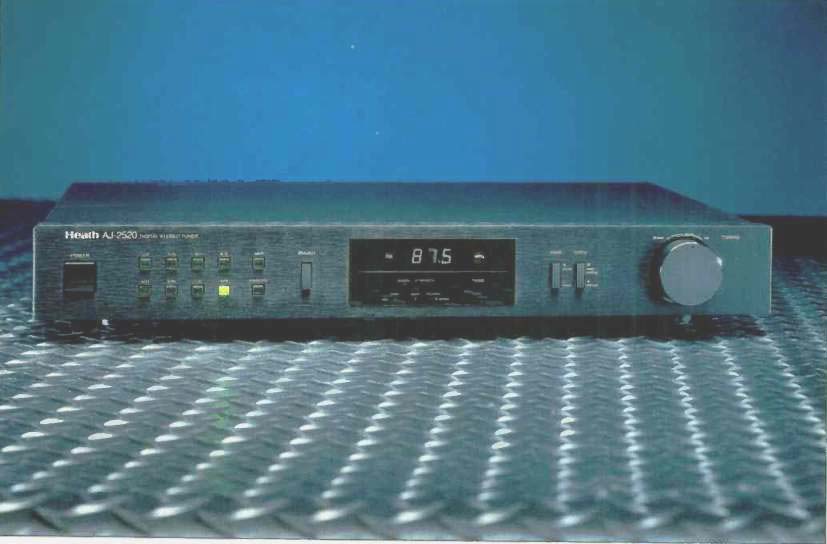
Manufacturer's Specifications:
FM Tuner Section:
Usable Sensitivity, Mono: 10.8 dBf.
50-dB Quieting Sensitivity, Stereo: 37.0 dBf.
S/N: Mono, 82 dB; stereo, 74 dB. THD, 1 kHz, at 65 dBf: Mono, 0.1%; stereo, 0.12%.
Alternate-Channel Selectivity: 50 dB.
Adjacent-Channel Selectivity: 5 dB. Capture Ratio: 1.3 dB.
I.F. Rejection: 80 dB.
AM Suppression: 55 dB.
Image Rejection: 50 dB.
Spurious Rejection: 75 dB.
Separation, 1 kHz: 40 dB.
AM Tuner Section:
Sensitivity: 15 µV. S/N: 53 dB.
Alternate-Channel Selectivity: 50 dB.
I.f. Rejection: 60 dB.
Image Rejection: 45 dB.
General Specifications:
Power Requirements: 120 V a.c., 60 Hz, 14 watts.
Dimensions: 17 7/16 in. W x 2 11/16 in. H x 14 3/16 in. D (44.3 cm x 6.8 cm x 46 cm).
Weight: 7.3 lbs. (3.3 kg).
Price: Wired, $249; kit, $229.
Company Address: Benton Harbor, Mich. 49022, USA.
The AJ-2520 is a quartz-locked frequency-synthesized stereo tuner. Sixteen AM or FM station frequencies can be stored in memory for instant recall. In the event of a power failure, these frequencies will be retained in memory for one week. I removed the cover from both the kit and factory wired versions and found that just about all of the tuner circuitry was contained on a single large circuit board. It had many unfilled holes, suggesting that Heath may use the same p.c. board for other models-perhaps for a tuner! preamplifier or even as part of a complete AM/FM receiver.
The only physical differences between the two units that I could detect were a loose tuning knob and one end of a 2.2megohm resistor that was dangling inside the chassis of the kit version. The tuning knob was easily tightened with a 3/8 inch socket wrench (it probably loosened in shipment), while the dangling end of the 2.2-megohm resistor was rejoined to one side of the line cord by means of a wire nut which had evidently worked loose. The resistor plays no part in the actual operation of the tuner but merely serves as a high-resistance path to chassis ground. The wiring done by Mr. Pitts was neat, as neat as that in the factory-wired set.
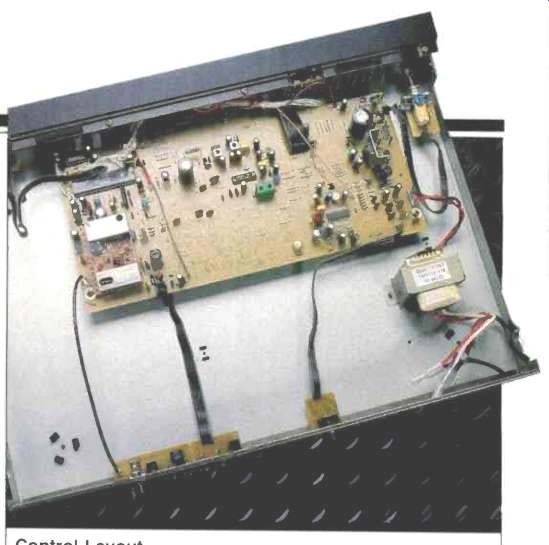
(I'm not just saying this because he is my editor!) But with all due respect to his skill as a kit builder, I hasten to add that it's almost impossible not to come up with a neat-looking assembled tuner if you follow the excellent step-by-step instructions Heath provides.
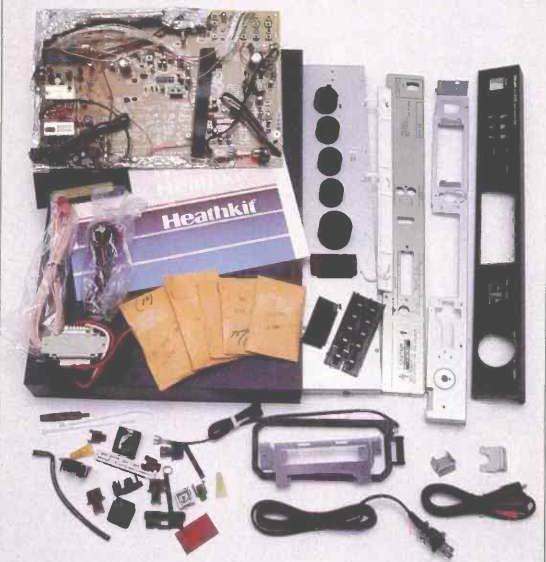
Control Layout
A large square power switch is at the left end of the front panel. To its right are eight station preset buttons, each with two numbers above it. The nearby "Shift" button determines which of the two numbered preset frequencies (1 or 9, 2 or 10, etc.) should be called up. This arrangement keeps the front panel less cluttered than would be the case if 16 separate preset buttons were provided. The "Memory" button, just below "Shift," is used for storing the individual station frequencies.
Further to the right is the AM/FM selector button, and to its right is the display area that shows tuned-to frequency, selected band (AM or FM), presence of a stereo signal, three levels of incoming signal strength (using three LEDs), and an indicator that lights up when stations are properly center tuned. The "Mode" switch to the right of the display selects stereo or mono operation, and the next switch chooses manual or seek tuning. The large rotary tuning knob at the right end of the panel cannot be turned completely; it can be adjusted only about 30° in either direction from its neutral position. It will raise tuned frequency when turned to the right and will lower the frequency when turned to the left.
The rear panel of the AJ-2520 is equipped with 75-ohm coaxial and 300-ohm screw terminals. A separately supplied AM loopstick can be affixed to a clip on the rear panel or placed at some distance from the tuner for somewhat better reception. (The tuner's metal chassis may interfere with reception by attenuating incoming signal strength.) A simple accessory FM T-antenna is included with both the kit and wired versions. As usual, the owner's manual recommends the use of a better outdoor FM antenna if noise or poor reception is encountered when using the minimal antenna supplied. A pair of stereo output jacks completes the rear-panel layout
Measurements
Identical tests were made for the factory-wired tuner and the tuner assembled from the kit. For all Figures shown, the "A" graph represents the results obtained with the factory wired tuner, and the "B" graph represents the performance of the kit-built tuner.
Figure 1 shows FM frequency response. Response was virtually identical for both tuners except for a slight difference in output level between channels at the treble end of the spectrum for the kit version (Fig. 1B). In Fig. 1A, the solid curve (left channel) and dashed curve (right channel) were deliberately offset for clarity. Had this not been done, the curves would have been identical in amplitude and shape.
For the factory-wired tuner, response was off by 2.6 dB at 15 kHz. For the kit version, response at 15 kHz was down 3.3 dB on the left channel and 2.4 dB on the right. Response at the bass end of the spectrum was substantially the same (within 0.1 dB) for both units.

Fig. 1A--FM frequency response for left channel (solid curve) and right
channel (dashed curve) of factory-wired version. Curves have been displaced
for clarity.

Fig. 1B--FM frequency response for left channel (solid curve) and right
channel (dashed curve) of kit version.
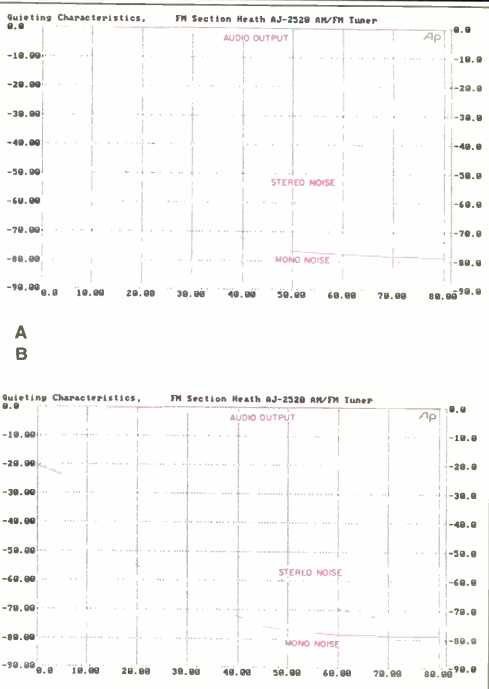
Fig. 2--FM quieting characteristics of factory-wired version (A) and kit
version (B).
Figure 2 shows mono and stereo quieting characteristics.
Talk about two peas in a pod! Best signal-to-noise ratio in mono for both units was 78 dB, short of the 82 dB claimed by Heath but certainly excellent for a tuner in this price category. In stereo, at a signal input level of 65 dBf, the kit built version actually exhibited a tiny bit better S/N ratio than the factory-wired unit (71.3 dB against 70 dB). When a really strong signal was applied (80 dBf), the tuners settled in with signal-to-noise ratios of 72.3 dB for the factory-wired unit and 73.0 dB for the kit unit. Notice that a transition from mono to stereo takes place between 30 and 40 dBf for both units. The exact threshold cannot easily be determined from these curves, because the automatic plotting system of my Audio Precision test gear takes readings at discrete signal levels. In any case, the point of transition seems to be well chosen, since by the time the signal dropped to 40 dBf, signal-to-noise ratio for the factory-wired tuner was 50 dB in stereo (slightly better for the kit), and listening to stereo with greater background noise than this is not particularly pleasant, to say the least.
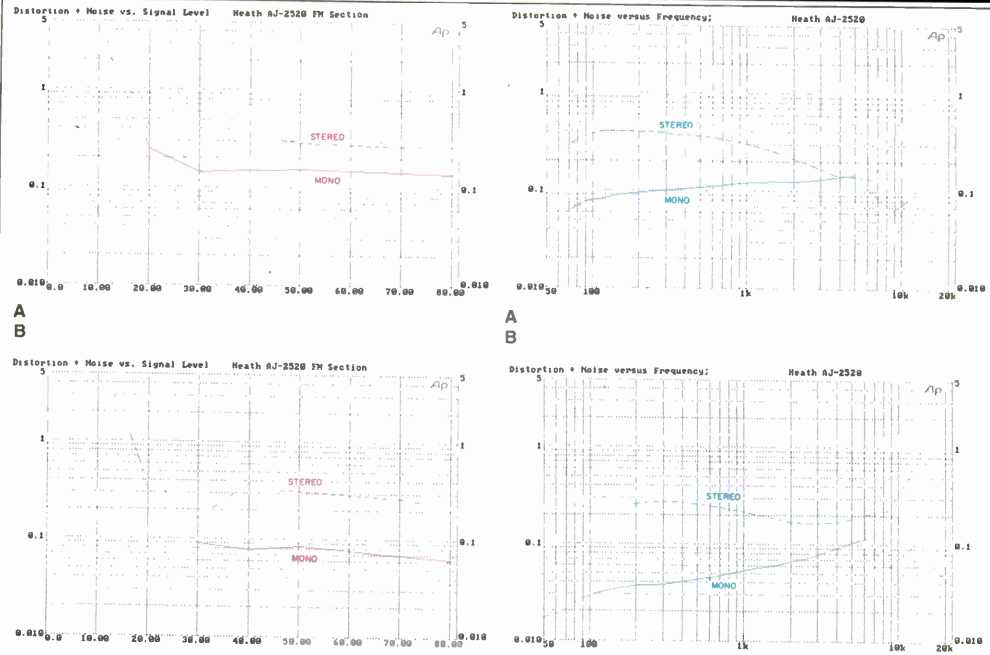
Fig. 3--THD + N vs. signal level for FM section of
factory-wired version (A) and kit version (B). Fig. 4--THD
+ N vs. frequency for FN section of factory-wired version (A) and kit
version (B).
Figure 3 shows an interesting phenomenon that I've noticed on many tuners before. If you carefully tune an FM circuit for lowest distortion in mono, you may not always get the lowest possible distortion in stereo (and vice versa). Take a look at Figs. 3A and 3B. For the factory-wired tuner, lowest THD + N at strong signal levels, using a 1-kHz test signal, was about 0.15% for mono and 0.28% for stereo. For the kit-built tuner, THD + N at 65 dBf was 0.075% in mono and 0.28% in stereo. In this instance, stereo THD + N did not follow the same pattern as did mono THD + N. Still, for mono, the kit-built tuner actually did better than the published spec, though the factory-wired tuner didn't meet the mono THD spec by only a small amount.
Mono usable sensitivity is also defined by this data; it's the point where THD + N is-30 dB, or 3.162%. In this case (which I don't regard as particularly important), the factory-wired tuner did slightly better than the kit, with a reading of 12 dBf versus 12.9 dBf.
At the 100-Hz test frequency, the kit version posted slightly better results for distortion than the factory-wired version; at 6 kHz, the reverse was true. As shown in Fig. 4, THD + N at 100 Hz was 0.078% in mono and 0.37% in stereo for the factory-wired unit and was 0.028% in mono and 0.12% in stereo for the kit version. At the test frequency of 6 kHz, the results were 0.1% in mono and 0.14% in stereo for the factory-assembled tuner and were 0.12% in mono and 0.2% in stereo for the kit.
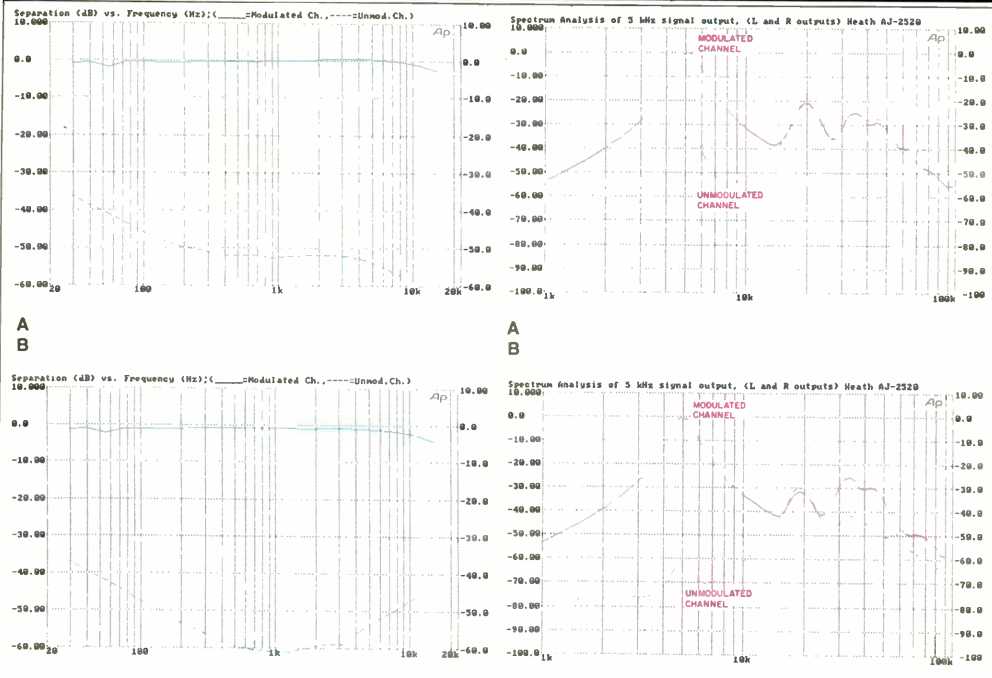
Fig. 5--FM frequency response and separation of factory-wired version
(A) and kit version (B). Fig. 6--Spectrum analysis, showing crosstalk
products, for FM section of factory-wired version (A) and kit version (B).
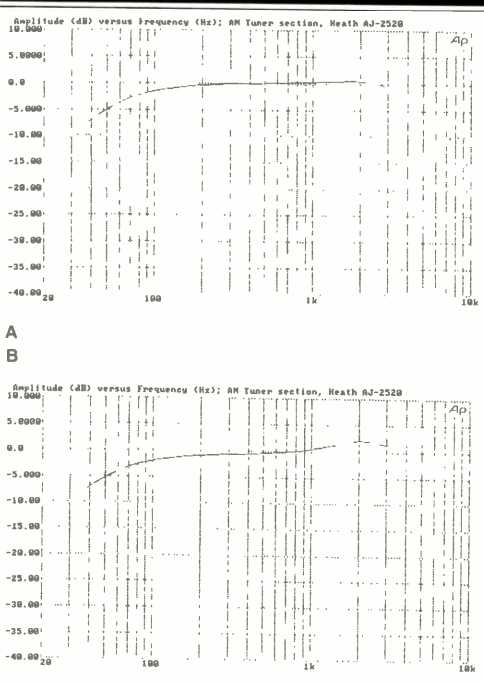
Fig. 7--AM frequency response of factory-wired version (A) and kit
(B).
Plots of FM stereo separation are presented in Fig. 5. One aspect of both tuners that I did not like at all was the presence of a great deal of 19and 38-kHz subcarrier products at the outputs of each unit. These signals could have an adverse effect on Dolby noise reduction when taping FM programs. The subcarrier products were so great, in fact, that when I made the usual separation measurements using a simple two-channel sequential sweep on my test instrument, it appeared that separation was no more than about 23 dB or so. To arrive at meaningful separation curves, I had to alter the test parameters so as to treat the second sweep as a measurement of crosstalk, adding a bandpass filter that swept along with the plots. Under these conditions, the true separation at 1 kHz (or crosstalk, if you prefer) was 52 dB for the factory-wired tuner and just over 60 dB for the kit unit! At 100 Hz, separation was 46 dB for the factory-wired version and 47.5 dB for the kit. At 10 kHz, separation measured a very impressive 53 dB for the factory-wired unit and 47.7 dB for the kit.
Figure 6 clearly illustrates the 19- and 38-kHz leakage. A 5-kHz signal was used to modulate one channel, and the output from that channel is represented by the solid curve in each of the two graphs; the dashed curve represents the output for the unmodulated channel. In both versions of the AJ-2520, output of the 19-kHz pilot carrier was down only a bit below -20 dB compared with the fully modulated, 5-kHz signal. Such amounts of subcarrier signal may be tolerable in car stereo FM tuners but should not be present in a tuner intended for use in a home system that will include a tape deck. Interestingly, the amount of 38-kHz subcarrier present at the outputs of the factory-wired version was the same for both channels, whereas in the kit, the modulated channel's output of spurious 38-kHz subcarrier and sidebands was greater than the unmodulated channel's. I have no explanation for this difference but maintain that, here again, there was far too much of these high-frequency signals in both tuners.
Secondary performance characteristics were remarkably close between the tuners, with the kit version generally edging out the factory-wired version slightly. Capture ratio was 1.5 dB for both units. Alternate-channel selectivity measured 52 dB for the factory-wired unit and 54 dB for the completed kit. AM rejection was 55 dB for both units, exactly as claimed by Heath. I.f. rejection was 80 dB for the factory-wired unit, 82 dB for the kit. Image rejection measured 55 dB for both units, while spurious response was 78 dB for the factory-wired unit and 80 dB for the kit. Image rejection measured 53 dB for both units.
As usual, about the only thing I thought worth testing in the AM tuner section was frequency response. Results are shown in Fig. 7. The -6 dB treble roll-off point for the factory-wired unit occurred at 4.0 kHz, which is not bad for a tuner in this price range. Owing to a slight peak centered at around 2 kHz in the kit version's response, the -6 dB treble roll-off point occurred at 4.3 kHz, making it the "winner" in the AM sweepstakes, if anyone really cares.
Use and Listening Tests
Mr. Pitts will have something to say about how easy (or how hard) it was to build the AJ-2520 kit. I would simply like to comment about how the moderately priced AM/FM tuner performed.
I hooked up each of the units to an AudioPrism 7500 indoor antenna that I recently tested for Audio (December 1989). As I logged station after station on the FM dial of each tuner, for a total of 45 usable signals, I was unable to detect any difference in sound quality between the two units. However, I should stress that because of the rather low figures for alternate-channel selectivity achieved by this tuner (and the very low figure for adjacent-channel selectivity claimed but not measured by me), there were many instances in which I intercepted strong signals over a "spread" of 400 kHz (200 kHz to either side of the actual transmitter frequency). This, therefore, is not a tuner for use in crowded metropolitan areas, where signals are often only 200 kHz apart, unless you intend to use a highly directional, rotatable outdoor antenna that can home in on the closely spaced signals you want to pick up. Of course, if you live in a relatively remote area where FM stations are spread across the dial, the poor selectivity of this tuner will not give you any grief.
One thing does remain clear. If you do elect to buy the AJ-2520, don't be afraid to buy it as a kit. You'll have fun putting it together, and its performance will be as good as that of Heath's factory-wired unit if you follow instructions and don't try to outsmart the assembly manual's author by anticipating steps. Finally, you'll save enough money to buy a couple of CDs (or some tape) in choosing the kit, and that's something to consider as well.
-Leonard Feldman
Kit Builder's Report
I spent about five hours on this kit, which I would rate as "moderate" or "easy" in difficulty; I am including in this about an hour searching out and setting up my construction gear. Heath says you'll need a pair of long-nosed pliers, a pair of regular pliers, wire strippers, diagonal cutters, a Phillips screwdriver, a 22- to 25-watt soldering iron, and a VOM, VTVM, or DMM. I've always felt that building a kit freed up enough money to indulge myself in a truly first-rate piece of electronics hardware. In this case, I bought myself a pair of Mathias Klein telephone installer's pliers from Specialized, which publishes a catalog that is the hand-tool freak's version of our Best of Audio. Next kit gets a production-line soldering iron with automatic temperature control.
There's a bunch of parts in this kit, but virtually all the assembly is of hardware parts into the chassis; that is, there is no stuffing of p.c. boards. You do need, however, to watch what you're doing, to keep your concentration and avoid interruptions. It's helpful, too, to separate all the different parts out so that you don't keep hunting for something that you know was just there. There are eight sizes of screws which I sorted into an egg carton; I should have put labels into each of the eight holes. As it was, I had to double-check against the life-sized drawings in Heath's invaluable illustration booklet almost every time I used one. All the other parts were easy to find, however, after they were spread out.
Full credit to Heath on this booklet as well as on the manual. I found no errors, though a very few may have been there, and I did make a couple which I had to go back and fix up. (No, I won't tell you what they were.) Such things can be avoided by doing one step at a time and checking off each step as it is completed.
It doesn't seem to me that you save very much money in doing up a kit, so you're going to have to get some psychic pay from the actual labor. Me, I like to do such things.
Whether you will or not, I can't tell. It's hard to go wrong on this level of project, even if it's your very first one, but if you should, Heath does have a good customer service organization. All in all, this is worth doing if only to gain a greater appreciation of what happens at the manufacturing level when the pros make a piece of gear.
- E.P.
(Audio magazine, Mar. 1990)
Also see:
Heath Model AJ-1510 Digital FM/FM Stereo Tuner (May 1972)
Hafler Iris FM Tuner (Feb. 1990)
Hafler DH-330 FM Tuner (Nov. 1986)
Heathkit AA-1800 Stereo Power Amp (Sept. 1982)
= = = =